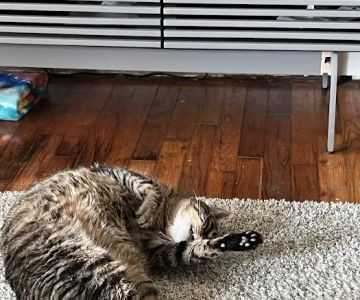Signs of Dental Problems in Cats: Early Detection and Care Tips
- 1-Why-Cat-Dental-Health-is-Important
- 2-Common-Signs-of-Dental-Problems-in-Cats
- 3-Causes-and-Risk-Factors-for-Feline-Dental-Issues
- 4-How-to-Check-Your-Cat-for-Dental-Health-Problems
- 5-Treatment-Options-for-Cat-Dental-Disease
- 6-Preventative-Care-and-Maintaining-Oral-Health
- 7-Real-Life-Stories-of-Cat-Dental-Issue-Management
- 8-Where-to-Find-Expert-Support-and-Products
Why Cat Dental Health is Important
Maintaining good dental health in cats is vital to their overall wellbeing. Poor oral health can lead to pain, infection, difficulty eating, and systemic health problems. Detecting signs of dental problems in cats early allows for timely treatment and prevents further complications.
Understanding the importance of feline dental care empowers pet owners to provide the best quality of life for their companions.
Common Signs of Dental Problems in Cats
Watch for symptoms such as bad breath, excessive drooling, pawing at the mouth, difficulty eating, swollen or bleeding gums, loose teeth, and changes in behavior like irritability or withdrawal. These are key indicators your cat may be experiencing dental issues.
Ignoring these signs can result in progression of disease and more invasive treatments later.
Causes and Risk Factors for Feline Dental Issues
Common causes include plaque buildup, gingivitis, periodontal disease, and tooth resorption. Age, diet, breed predisposition, and lack of regular dental care increase the risk for dental problems in cats.
Knowing these factors helps in proactive prevention and monitoring.
How to Check Your Cat for Dental Health Problems
Regularly inspect your cat’s mouth by gently lifting the lips to look for redness, swelling, or tartar. Observe eating habits and watch for discomfort signs. Routine veterinary dental exams are crucial for professional assessment.
Early detection through home observation complements veterinary care.
Treatment Options for Cat Dental Disease
Treatments vary from professional dental cleanings under anesthesia to antibiotics, tooth extractions, and pain management. Early-stage issues may be reversible with proper care, while advanced conditions require more extensive intervention.
Following your veterinarian’s recommendations ensures effective healing and comfort for your cat.
Preventative Care and Maintaining Oral Health
Brushing your cat’s teeth, providing dental diets or treats, and scheduling regular vet check-ups are key preventative measures. Consistency in dental care routines significantly lowers the risk of serious dental problems.
Using recommended products and following guidance from veterinary professionals enhances oral health maintenance.
Real-Life Stories of Cat Dental Issue Management
One cat owner shared how early recognition of bad breath and gum redness led to a prompt vet visit, saving her cat from painful tooth extractions. Another story highlights the transformation after professional cleaning and dedicated home care.
These accounts show the positive impact of vigilance and care.
Where to Find Expert Support and Products
For expert advice and quality feline dental care products, visit Hidden Brook Veterinary. Their knowledgeable team offers personalized recommendations and top-tier products to keep your cat’s teeth healthy and pain-free.
Investing in professional support and proper dental care supplies is essential for long-term feline oral health.











